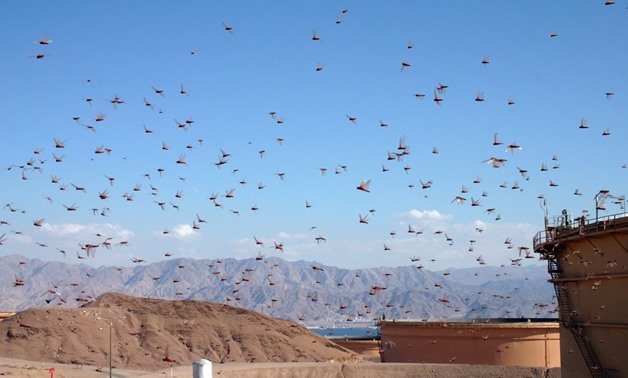
Swarms of locust in Eilat – Flickr/Niv Singer
CAIRO - 25 May 2019: Aswan Governor Ahmed Ibrahim issued directives to officials to intensify action meant to battle swarms of locusts that appeared Friday night on the southern borders, according to a statement from the Aswan's governor.
The governor ordered the deployment of locust combat teams in the western area adjacent to Aswan/Abu Simbel road, as well as the eastern and southern areas located east of the High Dam Lake.
Ibrahim directed Abu Simbel city head to provide logistic support for the combat teams alongside following up the unfolding situation to notify him about the combat and control efforts.
The combat efforts launched by combing the area and spraying insecticides from 12 locust combat bases, Head of Aswan locust control base Ahmed Ismail said.
Ismail attributed the appearance of desert locusts to spring breeding that starts from May and lasts till September, noting that the combat operations are being carried out during night when locusts are inactive and stop flying.
In February 2019, the head of Egyptian Agriculture Ministry's Central Department for Pest Control Mamdouh al-Sebae told Erem News that the concerned authorities are ready to bring the locust situation under control, as swarms are expected to head to Egypt in case both Saudi Arabia and Sudan manage to resist them.
The swarms are capable of destroying agricultural crops in record time, Sebae said.
Sebae explained that Egypt is fully coordinating with the FAO on the preparations and plans to target the desert locust threat through identifying the places where they exist first.
In 2007 and 2011,locust swarms attacked the Arabian Peninsula, while their remnants attacked Egypt, but could not cause any harm due to their small number. The attacking locusts were dealt with easily.
The last of these attacks was in 2013, where red locusts launched an attack across the southern border of the country and could access some Red Sea cities, in addition toHalayeb Triangle on the Egypt-Sudan border.
Comments
Leave a Comment